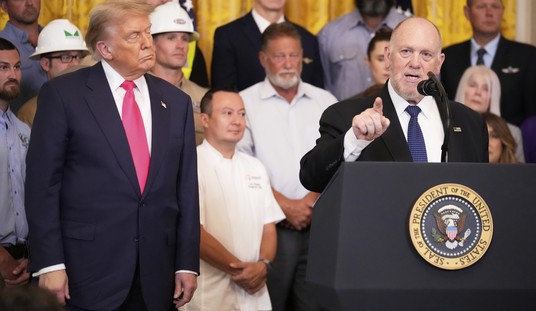When I was a kid growing up in Los Angeles, high-speed police chases were a staple on television. It seemed that anytime we turned the channel to a news station, we were greeted with helicopter footage following police officers in pursuit of yet another criminal who, for some reason, believed they could escape.
Over the years, police departments nationwide have reassessed their policies regarding how law enforcement chases criminals attempting to flee. Concerns about the various dangers inherent in these incidents were abundant.
Amid heightened crime rates, state and local governments are looking at relaxing the standards that might prompt an officer to engage in a high-speed chase. However, some have doubts whether these methods are safe or effective.
A recent report from Stateline described how various states are wrestling with how to stop fleeing suspects.
During several years of efforts to refine policing tactics — ranging from mandating body-worn cameras to limiting or banning excessive use of force — many states and law enforcement agencies nationwide imposed more restrictive car chase policies to protect civilians and officers.
Now, state legislators and some local and state agencies are turning back the dial, moving to relax the rules on high-speed vehicular pursuits largely because of concerns about crime, according to news reports and a review of testimony by Stateline.
A handful of jurisdictions have rolled back restrictions over the past year, including Florida, the District of Columbia, San Francisco and Washington state. On the other side, Michigan restricted chases, and Hawaii also is considering legislation that would set more restrictive statewide pursuit standards.
Policing experts suggest that state legislative changes nationwide have been influenced by various factors, such as political pressure or high-profile incidents. They expressed doubt that allowing more high-speed chases would significantly lower crime.
“Most people comply with the police voluntarily anyway, and most people are probably not aware of their local agencies’ pursuit policies,” Jacinta Gau, a criminal justice professor at the University of Central Florida and a police-community relations expert, told Stateline. “I don’t think it would have an appreciable impact on any sorts of crime.”
Some policing experts and former law enforcement officers say it’s important to strike a balance between apprehending potentially violent suspects and protecting the public from traffic accidents.
Rodney Bryant, a former Atlanta police chief and current president of the National Organization of Black Law Enforcement Executives, called decisions regarding chases “a very delicate balance” and pointed out that “One of the things that chiefs or policymakers have to take into consideration as it relates to [pursuits] is what harm happens if the person is not caught right then.”
The San Francisco Chronicle last year conducted a study analyzing deaths that occur during police chases. Their findings were quite alarming.
The results are staggering. In our investigation, “Fast and Fatal,” which includes the fullest accounting yet of police pursuit deaths, we found that at least 3,336 people were killed in police vehicle pursuits from 2017 through 2022. At least 1,377 people died in 2020 and 2021, the most recent years for which federal data was available — almost two people a day on average.
The Chronicle built a dataset of these deaths using information from three primary sources: the federal government, private research organizations and our own reporting. The resulting figures are still likely undercounts, as not every chase is the subject of a news story or a lawsuit, two sources the Chronicle used to find cases missing from government records.
Even more tragic is that “One out of 15 people killed in these cases were drivers pursued for suspected crimes,” while “More than half of the fatalities were either non-driving passengers in fleeing vehicles or bystanders.”
As stated previously, several states and localities mentioned in the reports have recently modified or are currently considering changes to their policies regarding police pursuits. Florida has loosened its restrictions, allowing officers more discretion when initiating chases. This includes pursuing those suspected of reckless driving and various misdemeanors. Conversely, Michigan has tightened up its rules, only allowing officers to chase suspects when there is probable cause for a violent or life-threatening situation.
Washington State has also chosen to relax its policies, allowing officers to initiate pursuits based on reasonable suspicion of any violation of the law. The District of Columbia and San Francisco have enacted changes that permit police chases for imminent threats and specific crimes, respectively.
The bottom line is that there is no easy solution to this question. There are certainly times when it is appropriate for a police officer to initiate a chase. But there are also instances in which the risk of injuring or killing a suspect or innocent bystander is far too high. With new policies implemented in various states and localities, new data will eventually indicate the best approach.













Join the conversation as a VIP Member